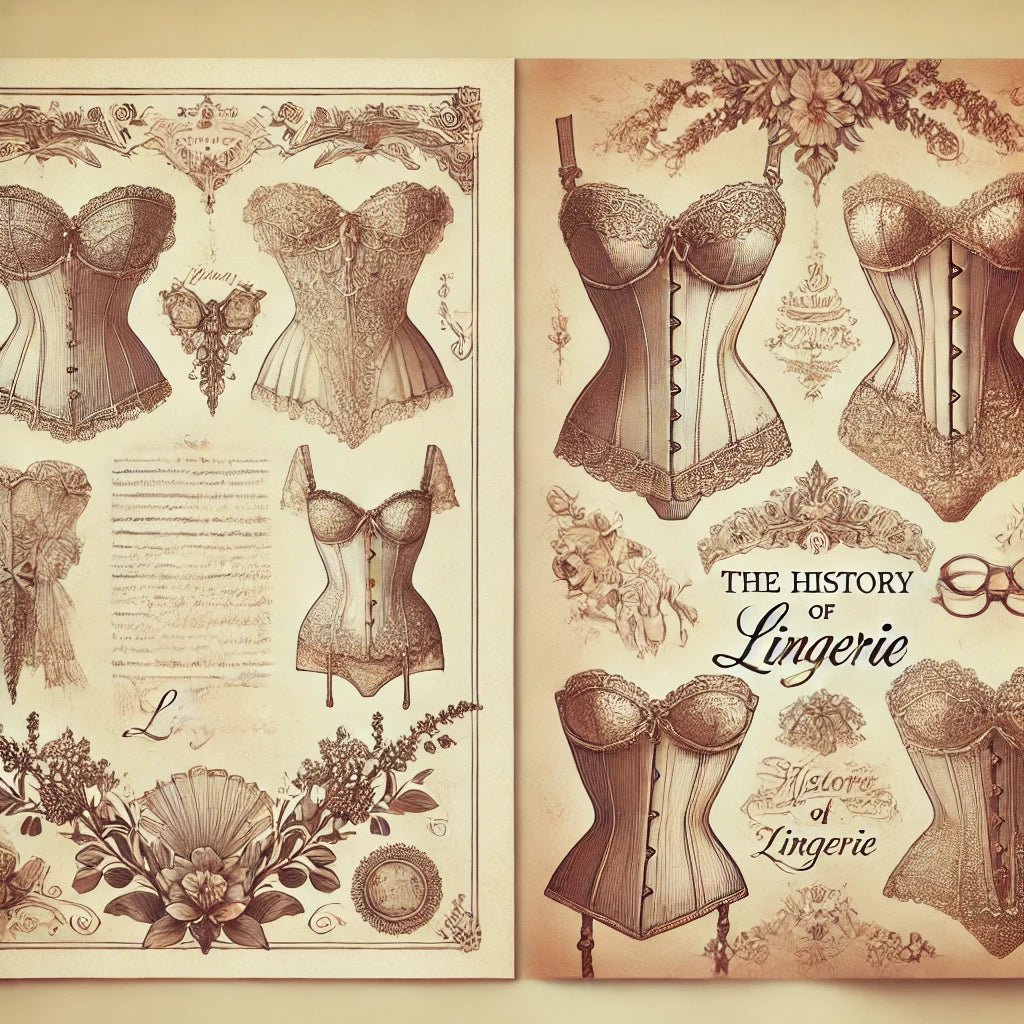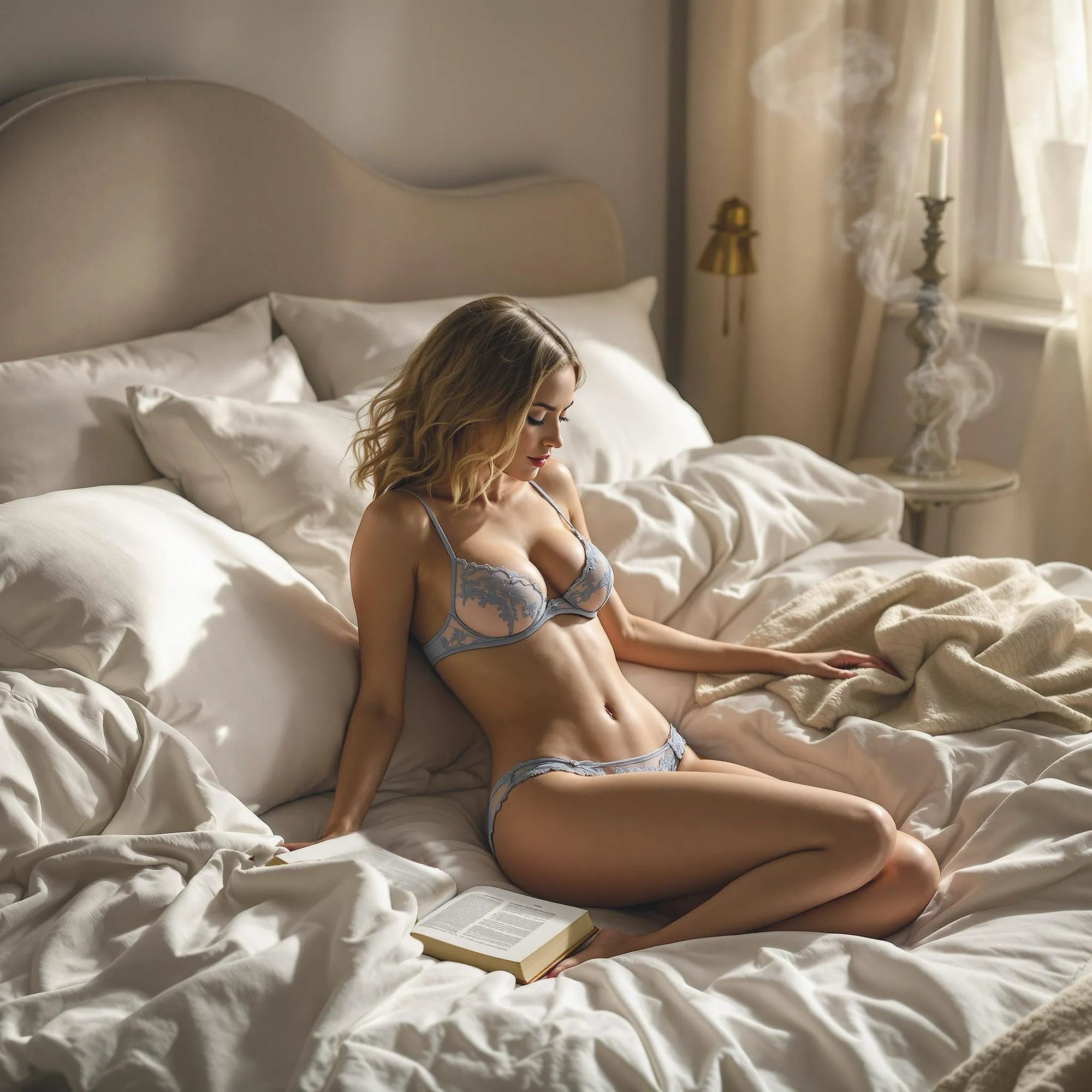Lingerie, understood as women's intimate apparel, has a fascinating history full of transformations. This piece of clothing, which today we associate with femininity and seduction, has gone through centuries of evolution, adapting to changing social, cultural and technological needs. Let's explore the main stages in the history of lingerie, from its origins in ancient times to modern trends.
Antiquity: The First Forms of Underwear
The history of lingerie begins in ancient times, where underwear had a primarily practical rather than aesthetic function. In ancient Egypt, women wore linen tunics, often under sheer dresses. In ancient Greece and Rome, women wore the **strophium**, a band of fabric wrapped around the torso to support the breasts, and the **subligaculum**, a type of loincloth.
The Middle Ages: Simplicity and Functionality
In the Middle Ages, underwear was simple and functional. Women wore linen shirts under their dresses, which served to protect their skin from heavier clothing and to maintain cleanliness. Underwear, during this period, was not meant to be seen and played a secondary role to outer clothing.
The Renaissance: The Advent of the Corset
The Renaissance marked the beginning of the widespread use of the corset, an undergarment that shaped the bust and waist. The corset was often rigid, made of whalebone or wood, and was worn to create an hourglass silhouette. In addition to shaping the body, this garment also reflected the growing importance of aesthetic appearance and fashion.
The 17th and 18th Centuries: The Evolution of the Corset
In the 17th and 18th centuries, the corset became even more structured and decorated. During the Baroque and Rococo periods, corsets were often embroidered and adorned with ribbons and lace. Women's underwear began to be considered not only functional but also beautiful, a concept that continued to evolve over the following centuries.
The 19th Century: Radical Change and the Introduction of Underpants
The 19th century saw major changes in women's underwear. The introduction of panties, or breeches, in the 1830s was a significant innovation. Panties were initially long and covered the legs to the knee, but over time they became shorter and tighter. Corsets continued to be worn, but with the advent of the Industrial Revolution, new materials and manufacturing methods allowed for more comfortable and less restrictive corsets.
The 20th Century: Revolution and Freedom
The 20th century brought a revolution in lingerie, driven by social and cultural changes. In the 1920s, the women's emancipation movement and the flapper style encouraged the abandonment of the rigid corset in favor of more comfortable and practical garments, such as the bra, invented in 1914 by Mary Phelps Jacob. This garment quickly became popular, offering women greater freedom of movement.
In the 1940s and 1950s, lingerie began to be seen as a symbol of femininity and glamour. Icons such as Marilyn Monroe and Bettie Page helped popularize sexy, luxurious underwear. During these years, the pointed bra and high-waisted panties became fashionable, enhancing the natural curves of the female body.
In the 1960s and 1970s, the sexual revolution and feminist movement further influenced lingerie. Women began to prefer simpler, more comfortable underwear, reflecting a greater focus on comfort and practicality. Brands such as Victoria's Secret, founded in 1977, helped make lingerie a desirable and accessible fashion item.
The 21st Century: Diversity and Inclusivity
In the 21st century, lingerie continues to evolve, embracing greater diversity and inclusivity. Lingerie brands are expanding their size ranges to include all body shapes and sizes, promoting a more inclusive image of beauty. Sustainability has become an important consideration, with many companies using eco-friendly materials and ethical manufacturing practices.
Lingerie today is not just a functional piece of clothing, but also an expression of personal style and identity. The variety of styles available, from sports bras to lace bodysuits, reflects the different needs and preferences of modern women. Technology has also brought innovations such as seamless bras and shapewear, offering unprecedented comfort.
The history of lingerie is a testament to the ever-changing roles and perceptions of women in society. From a simple functional garment to a symbol of femininity and fashion, lingerie has gone through centuries of change, adapting to the changing needs and desires of women. Today, lingerie is more inclusive and diverse than ever, offering all women the opportunity to feel comfortable and confident.
The History of Lingerie
Posted by The Game Lingerie AI on



